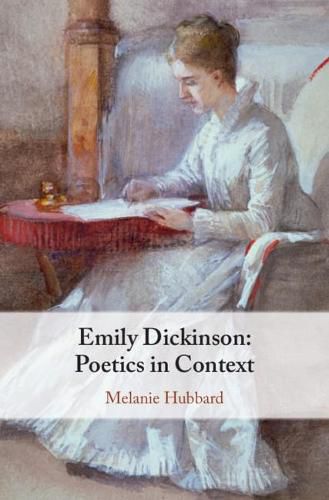Readings Newsletter
Become a Readings Member to make your shopping experience even easier.
Sign in or sign up for free!
You’re not far away from qualifying for FREE standard shipping within Australia
You’ve qualified for FREE standard shipping within Australia
The cart is loading…






This book re-assesses Dickinson’s manuscripts, style, and statements to arrive at a historically appropriate conception of poetics. It compares her composition practices, such as variant generation and writing on already-marked scraps, with those of her peers in nineteenth-century American popular manuscript culture, tracing them to the pervasive influence of Scottish Common Sense philosophy, Hume’s scepticism, and associationism in philosophy of mind and early neuroscience. The argument consults the archives and considers Dickinson’s reading, in and out of school, in philosophy, rhetoric, and semiotic theory, as well as her training in inductive science and her familiarity with ideas about electricity, evolution, emotion, sympathy, and the brain. Combining close readings of poems with contextualizing information about contemporary conflicts in intellectual history, the book contends that Dickinson takes the making of poems to be her philosophical praxis. It depicts a Dickinson committed to thinking about the physical constitution of human consciousness and the historicity and materiality of one of its chief modes, language.
$9.00 standard shipping within Australia
FREE standard shipping within Australia for orders over $100.00
Express & International shipping calculated at checkout
This book re-assesses Dickinson’s manuscripts, style, and statements to arrive at a historically appropriate conception of poetics. It compares her composition practices, such as variant generation and writing on already-marked scraps, with those of her peers in nineteenth-century American popular manuscript culture, tracing them to the pervasive influence of Scottish Common Sense philosophy, Hume’s scepticism, and associationism in philosophy of mind and early neuroscience. The argument consults the archives and considers Dickinson’s reading, in and out of school, in philosophy, rhetoric, and semiotic theory, as well as her training in inductive science and her familiarity with ideas about electricity, evolution, emotion, sympathy, and the brain. Combining close readings of poems with contextualizing information about contemporary conflicts in intellectual history, the book contends that Dickinson takes the making of poems to be her philosophical praxis. It depicts a Dickinson committed to thinking about the physical constitution of human consciousness and the historicity and materiality of one of its chief modes, language.